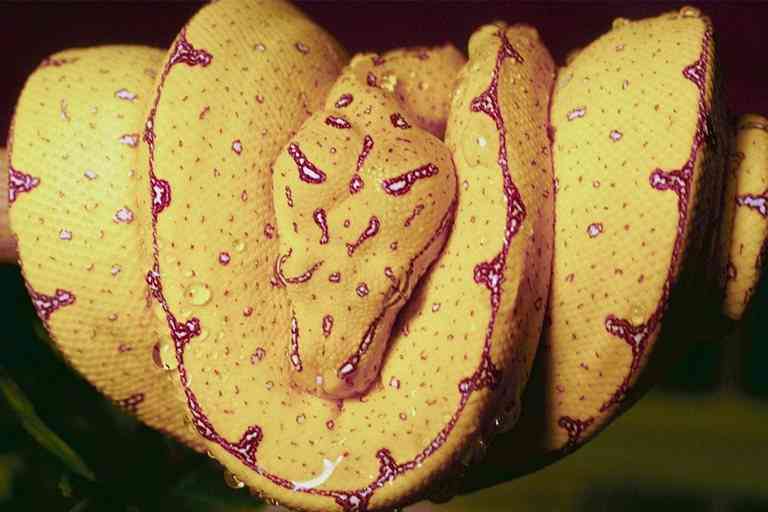|
| 질의: Mammal | 결과: 1590번째/3457 | |
Snake2 - young green tree python (Morelia viridis)
| 제목: | Snake2 - young green tree python (Morelia viridis)
| | 올린이: | Trudie Waltman (trudiewaltman@hetnet.nl)
| |

| 파일크기 : 32152 bytes
File date : 1999:12:29 16:13:11
해상도: 768x512
Jpeg process : Baseline
Posted Newsgroups: alt.binaries.pictures.animals
Posted 촬영일: Tue, 7 Dec 1999 17:53:49 +0100 |
Groetjes Trudie
******************
filename="Snake2.jpg"
Comments
========
From: John White
Subject: Re: Snake2
Date: Tue, 07 Dec 1999 13:14:04 -0500
Another great picture!
A juvenile Green Tree Python (Chondropython viridis). It turns green
as it matures.
--
Best Regards,
John White
Reptiles & Amphibians of Virginia - http://www.erols.com/reptiles/
Wildlife & Nature Photographs - http://members.xoom.com/crocodilians/
Comments
========
The green tree python (Morelia viridis) is a species of python native to New Guinea, islands in Indonesia, and Cape York Peninsula in Australia. Described by Hermann Schlegel in 1872, it was known for many years as Chondropython viridis. As its name suggests, it is a bright green snake that can reach 2 metres in length and 1.6 kg in weight, with females slightly larger and heavier than males. Living generally in trees, the green tree python mainly hunts and eats small reptiles and mammals. It is a popular pet and numbers in the wild have suffered with large-scale smuggling of wild-caught green tree pythons in Indonesia. Hatchlings are lemon-yellow with broken stripes and spots of purple and brown, or golden or orange-red.
|
댓글 |
|---|
| | Brenda Randall |
|
| qdxer812n4spq3k6 |
| | 손님 |
|
Scientific Name: Morelia viridis (Schlegel, 1872)
Common Names: Green Python, Green Tree Python
Synonyms:
Chondropython azureus Meyer, 1874
Chondropython pulcher Sauvage, 1878
Chondropython viridis (Schlegel, 1872)
Python viridis Schlegel, 1872
Taxonomic Notes: This species has two subspecies: M. viridis viridis (Schlegel, 1872), M. viridis shireenae Hoser, 2003. |
^o^
동물그림창고 똑똑전화 누리집
^o^
|
|
|

